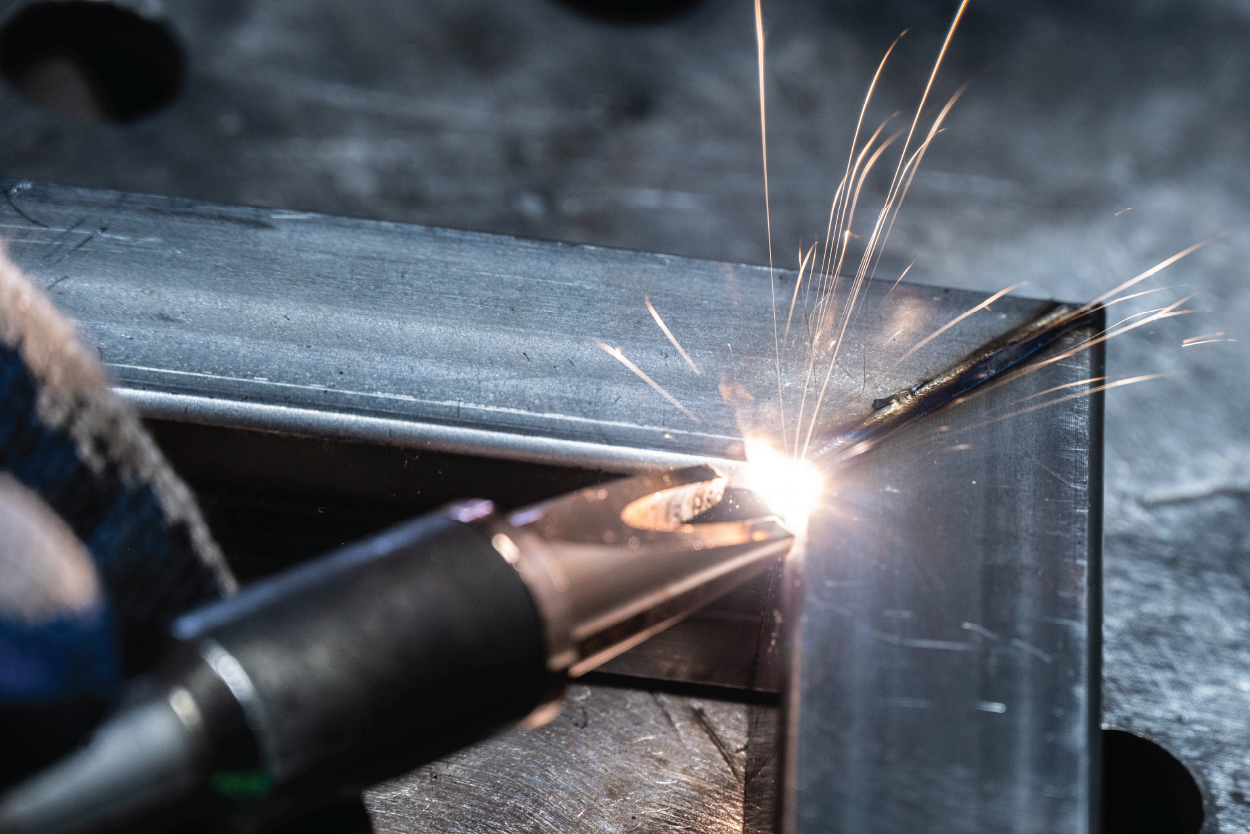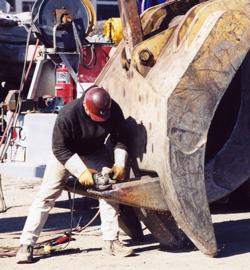Typical Welding Fixing Issues and Exactly How to Address Them Successfully
Welding repair services usually come across a variety of concerns that can endanger the integrity of the end product. Typical troubles include insufficient infiltration, porosity, and imbalance, among others. Each flaw provides unique difficulties that require specific techniques for resolution. Recognizing these problems is necessary for welders aiming to enhance their results and abilities. This conversation will certainly check out these common welding repair service concerns and effective approaches to resolve them.
Poor Penetration
Insufficient penetration takes place when the weld steel stops working to completely fuse with the base material, causing weak joints and possible structural failures. This problem frequently stems from not enough warmth input, wrong electrode angle, or inappropriate welding rate. Welders may experience inadequate penetration due to a miscalculation of the necessary specifications for a certain product thickness or kind. Furthermore, contamination on the base material's surface can prevent effective bonding, aggravating the problem. To attend to inadequate penetration, welders need to guarantee suitable setups on their devices and keep a clean job surface. Routine evaluation of welds is suggested to recognize any type of shortages early, enabling timely adjustments and the prevention of jeopardized architectural integrity in bonded settings up.
Porosity
Porosity is a typical problem in bonded joints that shows up as little gas bubbles entraped within the weld steel. This defect can jeopardize the honesty of the weld, leading to decreased stamina and possible failing under tension. Montana Mobile Welding and Repair Welding. Porosity commonly develops from contamination, wetness, or incorrect welding methods, which permit gases to run away into the liquified weld pool. To deal with porosity, welders should guarantee correct surface area preparation, preserve a clean workplace, and use suitable welding criteria. Additionally, selecting the right filler product and shielding gas can mitigate gas entrapment. Normal evaluation and testing of welds can aid recognize porosity early, guaranteeing timely restorative activities are taken, therefore maintaining the quality and reliability of the bonded structure
Imbalance
Misalignment in welding can emerge from different variables, consisting of inappropriate configuration and thermal expansion. Recognizing the source is important for efficient resolution. Several improvement strategies are offered to straighten components and assure architectural honesty.
Root causes of Imbalance
Welding misalignment often comes from a variety of underlying concerns that can jeopardize structural honesty. One main cause is improper fit-up of components prior to welding, which can result in voids and irregular surface areas. Variations in thermal growth during the welding procedure can likewise cause distortion, specifically if the products being signed up with have various coefficients of growth. Furthermore, inadequate securing and fixturing may stop working to hold parts firmly in area, bring about motion throughout welding. Inadequately conserved tools, including welding devices and devices, might introduce disparities in the weld bead, further contributing to misalignment. Operator mistake, stemming from not enough training or experience, can likewise play a considerable function in creating misaligned welds.

Improvement Strategies Readily Available
Addressing imbalance successfully calls for a mix of restorative strategies customized to the certain problems handy. One common technique is the usage of jigs or components to hold elements in the correct setting during welding, ensuring constant placement. Additionally, preheating the products can assist decrease distortion and improve fit-up. For substantial imbalance, mechanical adjustment methods, such as making use of hydraulic jacks or clamps, can be utilized to remedy the placement prior to welding. Post-weld warm treatment may likewise be required to ease tensions triggered by misalignment. Cautious assessment and adjustment throughout the arrangement stage can stop imbalance concerns from becoming substantial problems, promoting a smoother welding procedure and improving total architectural integrity.
Distortion
Distortion is a common obstacle in welding that can occur from numerous aspects, including irregular cooling and heating. Recognizing the sources of distortion is vital for executing efficient prevention methods. Resolving this problem not just boosts architectural honesty but likewise improves the general quality of the weld.
Root causes of Distortion
When subjected to the intense warm of welding, materials usually undergo adjustments that can bring about distortion. This sensation mainly arises from thermal growth and tightening throughout the welding process. As the weld area warms up, the material expands; upon cooling, it acquires, which can develop internal stress and anxieties. On top of that, irregular home heating throughout a work surface can worsen these stresses, causing bending or bending. The kind of product also plays a significant function; metals with differing thermal conductivity and coefficients of development may respond in different ways, bring about uncertain distortions. Additionally, inadequate joint style and poor fixturing can contribute to misalignment during welding, enhancing the possibility of distortion. Understanding these causes is necessary for efficient welding repair service and prevention strategies.
Prevention Techniques
Efficient avoidance techniques for distortion during welding focus on controlling warmth input and guaranteeing appropriate joint design. Preserving a regular heat input assists to lessen thermal development and contraction, which can bring about distortion. Using strategies such as preheating the work surface can likewise minimize the temperature gradient, advertising consistent home heating. Furthermore, selecting suitable joint styles, such as T-joints or lap joints, can boost stability and minimize stress and anxiety concentrations. Executing appropriate fixturing to protect the workpieces in place even more help in maintaining positioning throughout the welding process. Staggered welding series can distribute warmth a lot more evenly, stopping localized distortion. By using these approaches, welders can considerably decrease the probability of distortion and boost the total quality of their welds.
Splitting
Fracturing is an usual concern encountered in welding repair services, frequently resulting from numerous variables such as incorrect cooling rates, material option, or inadequate joint prep work. The incident of splits can considerably endanger the honesty of the weld, bring about prospective failures during procedure. To resolve this concern, welders need to first examine the source, making sure that materials are compatible and appropriately picked for the details application. Additionally, controlling the air conditioning rate during the welding process is vital; quick cooling can cause tension and cause splitting. Proper joint layout and preparation likewise add to minimizing the risk. Executing these approaches can boost weld quality and longevity, inevitably decreasing the chance of splitting in finished weldments.

Insufficient Blend
A hot plate welding significant issue in welding repairs is insufficient combination, which happens when the weld steel does not appropriately bond with the base product or previous weld passes - Montana Mobile Welding and Repair Fabrication. This problem can lead to weak points in the joint, possibly compromising the honesty of the welded framework. Elements adding to insufficient fusion consist of inadequate warm input, inappropriate welding strategy, and contamination of the surface areas being joined. To address this issue properly, welders should guarantee proper pre-weld cleaning and surface prep work, as well as readjust their welding specifications to accomplish adequate infiltration and blend. Regular evaluation throughout the welding procedure can likewise aid recognize insufficient combination early, allowing for timely restorative measures to enhance the total top quality of the weld
Overheating
While welding fixings can improve architectural stability, overheating presents a significant obstacle that can cause material deterioration. Excessive warm during welding can change the mechanical buildings of metals, leading to reduced strength, raised brittleness, and bending. This phenomenon is particularly critical in high-stress applications where architectural reliability is extremely important. Identifying getting too hot can involve aesthetic assessments for staining or distortion, along with monitoring temperature level throughout the welding procedure. To reduce the threats related to getting too hot, welders need to employ ideal strategies, such as managing heat input, changing traveling speed, and utilizing appropriate filler products. Furthermore, carrying out pre- and post-weld warmth therapies can aid bring back material properties and improve the total high quality of the fixing, ensuring long-term performance and safety and security.
Often Asked Questions
What Are the Common Signs of a Welding Flaw?

Exactly How Can I Evaluate My Welds for Top quality?
To test welds for quality, one can use aesthetic examinations, ultrasonic testing, and radiographic techniques. Each technique guarantees architectural stability, identifies defects, and confirms adherence to defined requirements, inevitably boosting the dependability of the bonded joints.
What Safety Safety Measures Should I Take While Welding?
When welding, one ought to focus on safety and security by putting on appropriate individual safety devices, making certain appropriate ventilation, safeguarding flammable materials away, maintaining a clean workspace, and recognizing surroundings to avoid injuries and accidents.
Can I Repair a Weld Without Redesigning the Entire Joint?
Fixing a weld without remodeling the whole joint is possible, relying on the damages (Montana Mobile Welding and Repair Fabrication). Methods such as grinding, including filler product, or making use of a welding process can effectively attend to certain imperfections while maintaining the bordering structure
What Devices Are Essential for Reliable Welding Fixes?
Essential tools for efficient welding repairs consist of a welding machine, wire brush, mill, protective gear, clamps, and filler products. Each device plays an essential duty in making sure quality and safety and security during the repair process. Porosity commonly emerges from contamination, moisture, or improper welding methods, which enable gases to escape right into the molten weld pool. Badly maintained devices, including welding devices and devices, might introduce variances in the weld grain, more contributing to imbalance. When subjected to the extreme warm of tombstone welder welding, materials typically go through adjustments that can lead to distortion. Cracking is an usual issue run into in welding fixings, typically resulting from different elements such as incorrect cooling prices, product option, or insufficient joint prep work. A considerable concern in welding repair work is incomplete blend, which happens when the weld flux core welding wire steel does not sufficiently bond with the base product or previous weld passes.